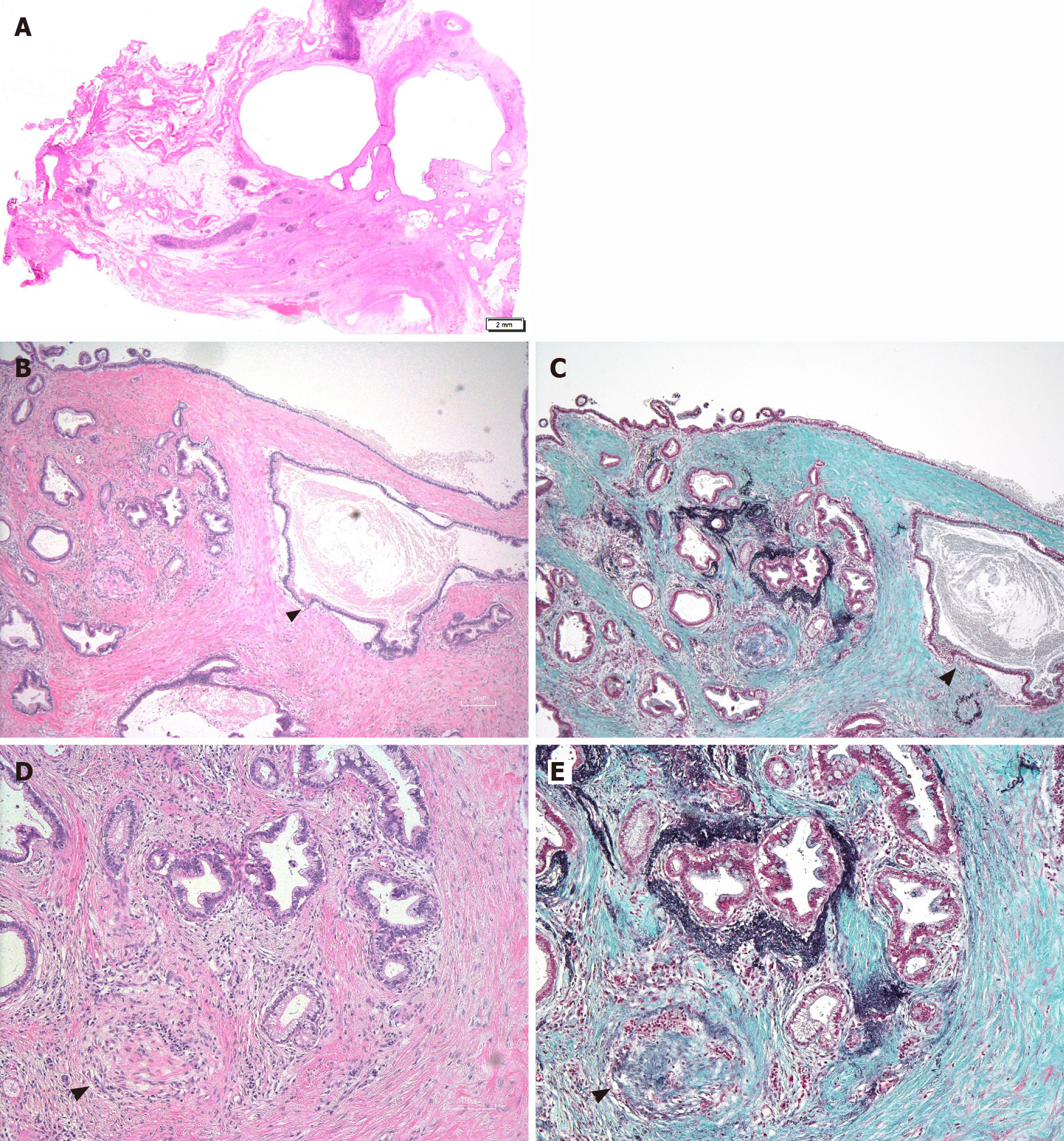Copyright
©The Author(s) 2021.
World J Gastroenterol. Jun 21, 2021; 27(23): 3262-3278
Published online Jun 21, 2021. doi: 10.3748/wjg.v27.i23.3262
Published online Jun 21, 2021. doi: 10.3748/wjg.v27.i23.3262
Figure 4 Pathological findings of large-duct pancreatic ductal adenocarcinoma.
A: Hematoxylin–eosin (HE) staining of the lesion (× 4); B: HE staining of the lesion (× 200) shows a dilatated glandular carcinoma > 0.5 mm in diameter (black arrowhead); C: Elastica–Masson immunohistochemistry (× 200) reveals that the dilatated glands lack elastic fibers (black arrowhead); D: HE staining of the carcinoma invading the myelin sheath (× 200; black arrowhead); E: Elastica–Masson immunohistochemistry (× 200) reveals that the dilatated glands invading the myelin sheath lack elastic fibers (black arrowheads show the myelin fiber).
- Citation: Sato H, Liss AS, Mizukami Y. Large-duct pattern invasive adenocarcinoma of the pancreas–a variant mimicking pancreatic cystic neoplasms: A minireview. World J Gastroenterol 2021; 27(23): 3262-3278
- URL: https://www.wjgnet.com/1007-9327/full/v27/i23/3262.htm
- DOI: https://dx.doi.org/10.3748/wjg.v27.i23.3262









